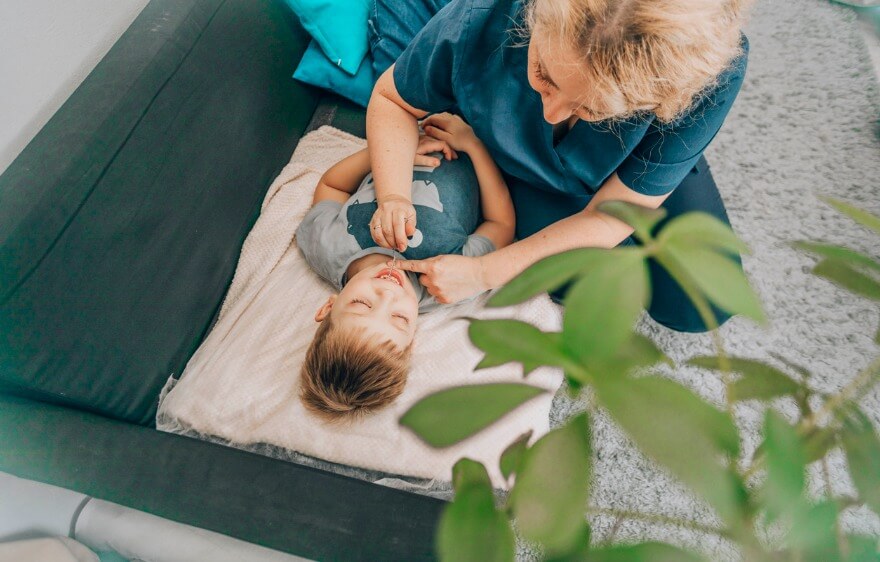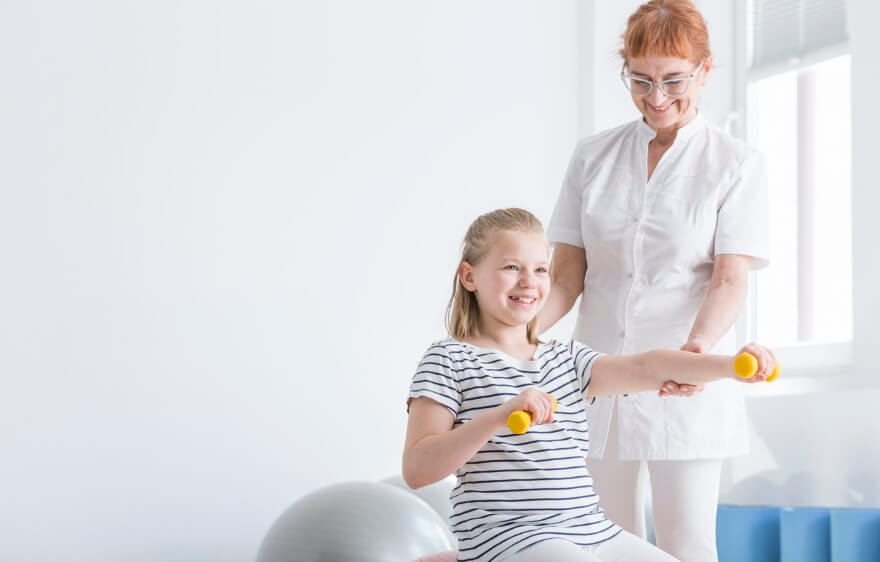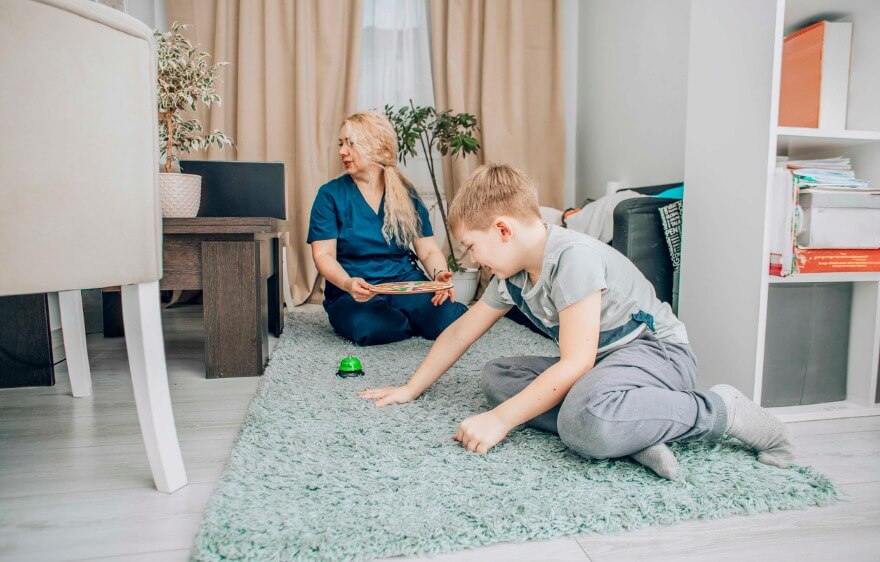AAh summer. While it’s certainly a time for relaxation and fun, it can also be a time when skills learned throughout the school year start to slip away. Especially when it comes to the hard-fought progress so many kids make in occupational therapy.
For parents, teachers, and occupational therapists (OTs) alike, it’s important to find the right balance between taking a much-needed break from the hectic school months while still maintaining and building on skills.
So, as an OT, what can you do to keep kids on track during these warmer months when the routine is a little more relaxed?
In this helpful guide, we’re exploring the important role OTs play during the summer and how they can use fun and enriching summer OT activities to support children. From keeping sensory processing skills sharp to ensuring fine motor skills stay on point, summer OT activities don’t have to feel like “work.” Instead, they can be an exciting, engaging, and meaningful part of any kiddo’s summer experience.
The Role of an OT Between School Years
Occupational therapy isn’t just about helping children develop basic motor skills or learn how to organize their school supplies. It’s about helping them live their lives to the fullest by teaching them how to manage the tasks they need to do every day. During the school year, an OT may work on specific goals related to classroom tasks, handwriting, self-regulation, or even social skills. But when school lets out for the summer, these tasks don’t just disappear. In fact, without regular practice, a child’s skills may begin to decline, which is why summer is the perfect time to continue working on these skills in fun and creative ways.
OTs are able to use the summer months to reinforce the foundation of a child’s development. Whether they’re helping a child maintain attention during unstructured playtime or supporting a family in creating a sensory-friendly home environment, summer OT activities should be designed to keep kids engaged, learning, and thriving even when the school bells are silent.
How OTs Can Keep Kids on Track During the Summer
The summer break offers a unique opportunity for OTs to create enriching experiences that might be too difficult to include in a more rigid school routine. Without the pressure of a strict academic schedule, there’s room for creativity and fun! During the summer, OTs can focus on:
- Sensory processing: Summer often comes with different sensory inputs that aren’t as prominent during the school year — think heat, humidity, different textures like sand or pool water, and a more flexible daily schedule. OTs can help children navigate these changes in sensory experiences by introducing summer-specific sensory activities.
- Fine and gross motor skills: Whether it’s running, jumping, or writing with a crayon, the summer months are an excellent time to reinforce fine and gross motor skills through play. Kids can practice balance, hand-eye coordination, and dexterity while engaging in fun outdoor activities.
- Self-regulation and executive functioning: Summer presents the opportunity to help children develop coping mechanisms for unstructured time. OTs can use this season to promote emotional regulation, time management, and planning.
- Social skills: Summer camps, pool days, and playdates are perfect opportunities for children to engage socially. An OT can incorporate strategies to support kids with social thinking, conflict resolution, and initiating and maintaining conversations.
- Maintaining routines and independence: A break from school doesn’t mean kids should abandon routines. OTs can recommend simple activities to help kids maintain some structure, whether it’s creating visual schedules for daily tasks or helping children build independence in self-care.
27 Fun and Enriching Summer OT Activities to Keep Kids on Track
Here is a list of fun and enriching summer OT activities that OTs can incorporate into therapy sessions or recommend to parents. These activities will help kids stay on track with their skills, all while having a great time in the process!
1. Water Play with Sponges or Water Balloons
A fun and sensory-filled way to practice fine motor skills and hand-eye coordination. Kids can squeeze sponges, toss water balloons, or play with squirt toys to work on grip strength and dexterity.
2. Obstacle Course
Designing an obstacle course in the backyard using items like cones, ropes, and cushions is a fantastic way to improve gross motor coordination, balance, and motor planning.
3. Nature Scavenger Hunt
This activity encourages sensory exploration. Children can search for different textures, colors, and sounds while improving their focus, attention, and following directions.
4. Sand Play
Playing in the sand helps with tactile sensory input and fine motor skills. Activities like building sandcastles, burying toys, or running fingers through sand can support hand strength and tactile tolerance.
5. Bubble Popping
Chasing, popping, and blowing bubbles is a classic summer activity that builds hand-eye coordination, visual tracking, and fine motor skills. It’s also incredibly fun for sensory processing!
6. DIY Sidewalk Chalk Art
Sidewalk chalk allows kids to work on bilateral coordination, hand-eye coordination, and creativity. Plus, it can be a calming activity to wind down after a busy day.
7. Bike Riding
Riding a bike is an excellent activity to support gross motor skills, balance, and coordination. OTs can encourage kids to go on bike rides with family to enhance leg strength and endurance.
8. DIY Sensory Bottles
OTs can guide kids in making sensory bottles filled with different materials like glitter, beads, and water. This activity promotes visual tracking and can be a calming sensory tool.
9. Hopscotch
A traditional game that encourages balance, coordination, and motor planning. This is one of the most fun summer OT activities because it can be adapted for various skill levels and provides a great opportunity for social play.
10. Building with Blocks
Using wooden or plastic building blocks helps kids with fine motor strength and precision while engaging their creativity. Encourage stacking, balancing, and building structures of different heights.
11. Swimming
Swimming is a full-body activity that enhances muscle tone, strength, and endurance. It also provides sensory input, making it an excellent way for kids to work on proprioception and vestibular processing.
12. Nature Walks With Challenges
Take kids on nature walks and introduce challenges like balancing on logs, hopping over puddles, or identifying different plants. It’s a fun way to work on motor planning and sensory awareness.
13. Cup Stacking
Cup stacking, also known as speed stacking, is an excellent way to improve hand-eye coordination, visual perception, and fine motor skills. Kids can practice creating towers or participating in timed stacking races.
14. Gardening
Planting seeds, watering plants, and digging in the soil involve a variety of fine and gross motor skills. Gardening also encourages responsibility and self-regulation, making it a perfect summer activity.
15. Playdough Creations
Using playdough to create shapes, letters, or animals helps children strengthen their hand muscles, improve tactile sensitivity, and foster creativity.
16. Jumping on a Trampoline
Jumping on a trampoline supports gross motor skills, balance, and body awareness. It also provides excellent vestibular input, which can help children regulate their sensory needs.
17. Yoga for Kids
Yoga encourages balance, flexibility, and body awareness. Incorporating fun animal poses like “Downward Dog” or “Cat-Cow” helps improve motor skills while promoting relaxation.
18. Sticker Sorting
Sorting and peeling stickers work on fine motor coordination and visual processing. Use different themes, like animals or shapes, for added learning opportunities.
19. Cooking or Baking Together
Involving kids in the kitchen helps them work on fine motor skills through tasks like stirring, measuring, and pouring. Cooking also provides a fun way to practice sequencing and following directions.
20. Paper Folding (Origami)
This activity challenges kids to follow step-by-step instructions, practice fine motor control, and increase hand strength — all while creating beautiful paper designs.
21. Tactile Sensory Bins
Create sensory play bins filled with rice, beans, or pasta. Kids can practice tactile exploration while working on fine motor skills like scooping, pouring, and sorting.
22. Ball Toss
A simple but effective way to work on eye-hand coordination and motor planning. Children can play games with soft balls, tossing them into baskets or containers.
23. Dancing
Put on some music and encourage kids to dance! Dancing is a great way to improve coordination, balance, and rhythm, as well as engage in social and emotional expression.
24. Walking on Different Surfaces
Walking barefoot on grass, sand, or pavement can help kids improve their proprioceptive awareness and balance, all while providing valuable sensory input.
25. DIY Fort Building
Encourage creativity and problem-solving by having kids build forts using blankets, pillows, and furniture. This activity helps with motor planning, teamwork, and spatial awareness.
26. Interactive Board Games
Choose board games that require physical activity, like Twister or games with dice that require movement. These games are perfect for promoting executive functioning, social interaction, and fine motor skills.
27. Painting with Different Brushes
Art is a fundamental OT activity, but this summer you can put a fun twist on it! Instead of traditional paintbrushes, let kids use sponges, cotton swabs, or even their fingers to create artwork. This promotes fine motor skills, hand strength, and creativity.
Building a Summer Bridge to Success
The summer months provide the perfect opportunity for OTs to help children maintain and develop the skills they need to succeed. By incorporating fun and enriching summer OT activities, OTs can provide kids with the chance to work on their motor, social, sensory, and self-regulation skills in a less structured, more relaxed environment. Whether it’s jumping on trampolines, building sandcastles, or creating sensory bottles, these activities help children stay on track with their goals and continue progressing even during the summer break.
Summer OT activities are not only about skill-building, they are also about helping children discover the joy in movement, creativity, and exploration. The unstructured time of summer allows children to practice these skills in real-world settings, whether they’re playing at the beach, exploring the park, or simply engaging in family routines at home.
For parents, this list of activities provides a variety of options to keep their kids engaged and challenged. Whether it’s through outdoor play, creative arts, or interactive games, there are countless opportunities for kids to stay on track with their development while having fun. Parents can also take advantage of summer vacations, camp programs, or weekend family outings to create natural learning opportunities that support their child’s ongoing progress.
As an OT, it’s important to remember that the key to success in the summer months is balance. Children need some downtime, but they also thrive when they are given opportunities for meaningful engagement. A combination of restful, creative, and movement-based activities ensures that kids can continue developing their skills, even when school is not in session.
The Care Options for Kids mission: linking families with highly skilled therapists to achieve the best possible outcomes for pediatric occupational therapy. By supporting exceptional specialists with the skills, knowledge, and resources they need to succeed, we can all help children flourish and reach their full potential.
Join the Care Options for Kids Team!
Are you ready for meaningful work that comes with benefits and not burnout? Join the compassionate care team that helps children and families live their best lives. Our clinicians provide best-in-class pediatric nursing, therapy, and school-based services. We bring individualized care to children where they live, work, and play. We have opportunities in homes, schools, and clinics across the country.
Apply at Care Options for Kids now. We make it easy to start so you can make a difference as soon as possible.






